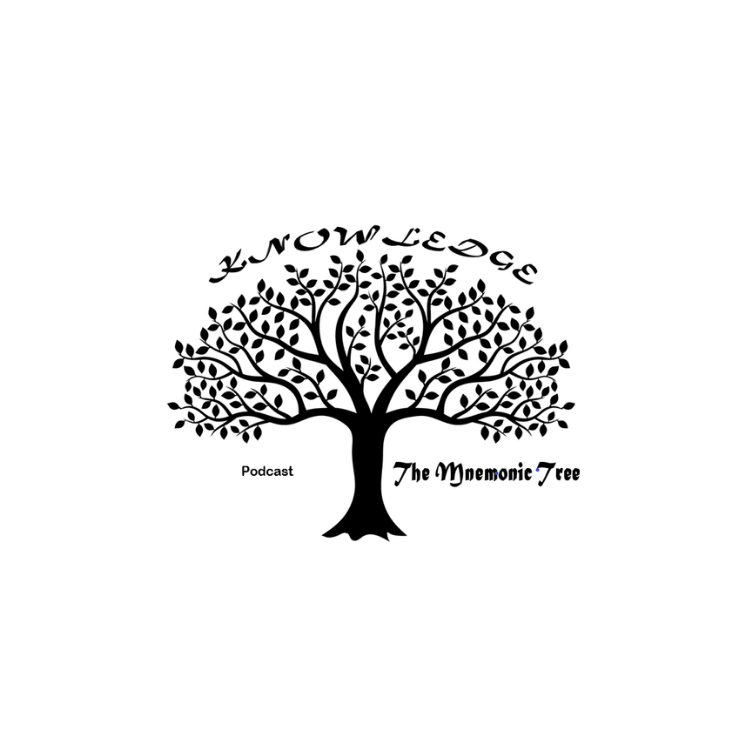Ep. 12: Charles Dickens – Top 7 Novels Mnemonic
Intro
Hello and Welcome to this episode of the podcast, "The Mnemonic Tree", where we add a single mnemonic leaf to our Tree of Knowledge.
Today's episode is on one of the biggest, if not the biggest names in the history of literature. Charles Dickens was a novelist, and social critic who put together some of the greatest works in the 19th century. His public readings of his own books later in his career were just as popular with crowds amazed at his theatrical panache.
Today’s mnemonic is on his top 7seven novels.
With that being said, we will begin with a summary from Wikipedia.
Wikipedia Summary
Charles John Huffam Dickens (/ˈdɪkɪnz/; 7 February 1812 – 9 June 1870) was an English writer and social critic who created some of the world's best-known fictional characters, and is regarded by many as the greatest novelist of the Victorian era.[1] His works enjoyed unprecedented popularity during his lifetime and, by the 20th century, critics and scholars had recognised him as a literary genius. His novels and short stories are widely read today.[2][3]
Born in Portsmouth, Dickens left school at the age of 12 to work in a boot-blacking factory when his father John was incarcerated in a debtors' prison. After three years he returned to school before he began his literary career as a journalist. Dickens edited a weekly journal for 20 years, wrote 15 novels, five novellas, hundreds of short stories and non-fiction articles, lectured and performed readings extensively, was an indefatigable letter writer, and campaigned vigorously for children's rights, for education, and for other social reforms.
Dickens's literary success began with the 1836 serial publication of The Pickwick Papers, a publishing phenomenon—thanks largely to the introduction of the character Sam Weller in the fourth episode—that sparked Pickwick merchandise and spin-offs. Within a few years, Dickens had become an international literary celebrity, famous for his humour, satire, and keen observation of character and society. His novels, most of them published in monthly or weekly installments, pioneered the serial publication of narrative fiction, which became the dominant Victorian mode for novel publication.[4][5] Cliffhanger endings in his serial publications kept readers in suspense.[6] The installment format allowed Dickens to evaluate his audience's reaction, and he often modified his plot and character development based on such feedback.[5] For example, when his wife's chiropodist expressed distress at the way Miss Mowcher in David Copperfield seemed to reflect her own disabilities, Dickens improved the character with positive features.[7] His plots were carefully constructed and he often wove elements from topical events into his narratives.[8] Masses of the illiterate poor would individually pay a halfpenny to have each new monthly episode read to them, opening up and inspiring a new class of readers.[9]
His 1843 novella A Christmas Carol remains especially popular and continues to inspire adaptations in every artistic genre. Oliver Twist and Great Expectations are also frequently adapted and, like many of his novels, evoke images of early Victorian London. His 1859 novel A Tale of Two Cities (set in London and Paris) is his best-known work of historical fiction. The most famous celebrity of his era, he undertook, in response to public demand, a series of public reading tours in the later part of his career.[10] The term Dickensian is used to describe something that is reminiscent of Dickens and his writings, such as poor social or working conditions, or comically repulsive characters.[11][12]
Extracted from: [https://en.wikipedia.org/wiki/Charles_Dickens]
Mnemonic
Charles Dickens – Top 7 Novels Mnemonic – THA GOAT
(Picture arguably the greatest writer of all time)
1. The Old Curiosity Shop
2. Hard Times: For These Times
3. A Christmas Carol
4. Great Expectations
5. Oliver Twist
6. A Tale of Two Cities
7. The Pickwick Papers
Five Fun Facts
1. Dickens was in the Staplehurst Train crash of 1865. His carriage was actually hanging over the edge of a viaduct. Once free he helped other passengers and comforted the injured and dying.
2. “Merry Christmas” is a popular phrase as a result of “A Christmas Carol”.
3. Dickens had a private funeral with 12 people. Another 10,000 people paid their respect over the next two days before his grave was closed.
4. Charles Dickens kept pet Ravens.
5. Despite passing 150 years ago, Dickens is still one of the top 100 bestselling authors in the UK, according to Nielsen Book Data.
Three Question Quiz
Q.1. Which pseudonym did Charles Dickens publish work under?
Q.2. Where was Charles Dickens buried?
Q.3. What age was Dickens when he had to drop out of school?
Bonus Q. What did the bartender say when Charles Dickens ordered a martini?
Mnemonic Recap
Charles Dickens – Top 7 Novels Mnemonic – THA GOAT
(Picture arguably the greatest writer of all time)
1. The Old Curiosity Shop
2. Hard Times: For These Times
3. A Christmas Carol
4. Great Expectations
5. Oliver Twist
6. A Tale of Two Cities
7. The Pickwick Papers
Three Question Answers
Q.1. Which pseudonym did Charles Dickens publish work under?
A. Boz
Q.2. Where was Charles Dickens buried?
A. Westminster Abbey (against his wishes)
Q.3. What age was Dickens when he had to drop out of school?
A. 15. He became a Legal Clerk
Bonus Q. What did the bartender say when Charles Dickens ordered a martini?
A. Olive or twist!
Word of the Week
cromulent
[ krom-yuh-luhnt ]
adjective
acceptable or legitimate.
Example
Charles Dickens was a cromulent genius with his use of words.
Extracted from: [https://www.dictionary.com/]
Website: https://www.themnemonictreepodcast.com/
Apple Podcasts: https://podcasts.apple.com/au/podcast/the-mnemonic-tree-podcast/id1591795132
Spotify: https://open.spotify.com/show/3T0LdIJ9PBQMXM3cdKd42Q?si=WQ1SnHo5QgOawX-mxS6yUA
References
https://pippapark.com/blog/10-fun-facts-about-charles-dickens
https://www.mentalfloss.com/article/548057/facts-about-charles-dickens
https://www.factinate.com/people/42-little-known-facts-charles-dickens/
https://www.dictionary.com/e/word-of-the-day/cromulent-2021-03-03/



